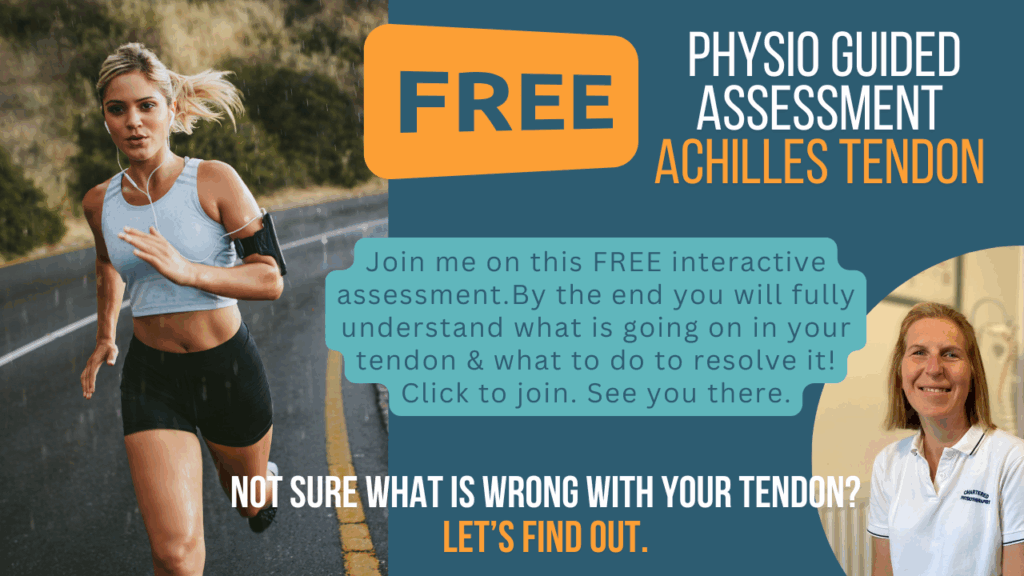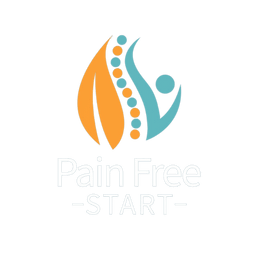In this blog, we find out more about the Achilles tendon and what’s going on when we have Achilles Tendinopathy. Before going on to look at the best way to treat it.
The Achilles Tendon
Tendons are strong rope-like tissue that contains collagen protein. The purpose of the tendon is to transmit forces from the muscle to the bone, connecting the two and allowing movement to occur. In the case of the Achilles tendon, it connects the calf muscle to the calcaneus (heel bone). It is the strongest tendon in the body.
What Is The Difference Between Tendonitis and Tendinopathy?
These terms are often used interchangeably – leading to confusion.
Historically we have used the term tendonitis to describe this problem but as our knowledge and understanding have grown we now know that it is not inflammation within the tendon (tendonitis) that is the cause, and so the term Tendonitis no longer correctly describes the problem. If you are reading something that refers to this outdated term then maybe question how useful this information is.
Tendinopathy on the other hand is when the collagen proteins that make up the tendon become unhealthy and degenerate. It is an imbalance between the wear and repair process within the tendon, leading to poor tendon health. It is an active degenerative process that also involves some level of an inflammatory process. This change in our understanding of the problem has allowed us to treat this problem much more effectively.
Acute/Reactive Or Degenerate Tendinopathy
It was thought that tendonitis over time leads to tendinopathy and poor tendon health. However, newer research shows that this is not the case, but there is a progression of the disease with different stages. These findings are important when we look at how to treat problems. Some people are unaware that they have a degenerate tendon and may have had this for years without symptoms.
Not Sure If You Have Got Achilles Tendinopathy?
Still unsure whats going on with your tendon? Don’t worry this is completely normal – I’m here to help. I have designed a FREE Masterclass where together we assess your tendon, discover what is going on and what you can do to help. Click here to learn more and enrol. I would love to see you there.

Acute/reactive Tendinopathy
This is a painful, sudden acute flare-up. It is normally due to a change or increase in exercise or load. If treated appropriately with relative rest, ice, anti-inflammatories (if appropriate for you), appropriate innersoles, and maybe even splinting then you can return to a normal tendon.
Degenerate Tendinopathy
If you continue to overload the tendon during the acute phase then this normally leads to an unhealthy and degenerate tendon. If left untreated the result can be a ruptured tendon. I saw a patient recently that this happened to he was young and fit, and had no idea his tendon was degenerated until it ruptured. Have a look at his case study here it is very interesting.
Do You Have A Reactive Or Degenerate Tendon?
Identifying if someone is reactive or degenerate helps in targeting effective treatment. In most cases, we see a reactive/acute episode in an already degenerate tendon. In these cases, we are looking to settle down the acute symptoms, before focusing our attention on returning the degenerate tendon to good health and function. It’s very easy to settle the acute painful episode, thinking that the problem is resolved when unbeknown to you, you still have a degenerate tendon. Failure to address this commonly leads to recurrence of the acute flare-up and less commonly rupture – complete or partial. These ruptures generally require surgical intervention.
Returning Tendon Health
It is not all doom and gloom because returning tendons to good health is achievable, you just have to know what you are doing. The aims of treatment differ depending on whether you are having an acute (reactive) flare-up or if you have a more long-term degenerate tendon.
Once acute symptoms are settled we need to concentrate on returning the tendon to good health.
Treatment options.
Research and clinical experience show us that loading a degenerate tendon is beneficial and it is the only treatment modality with level 1 evidence to support its use. This is also the treatment of choice indicated in the NICE guidelines for Achilles Tendinopathy. Find out more about the benefits of eccentric loading.
Loading improves the structure and health of the tendon – which in turn improves function and reduces your pain. Using a staged loading program allows for gradually increasing load and compression through the tendon.
Loading is essential for tendon health. However, too much load or too little load creates poor tendon health. So getting the balance right is essential and where most people go wrong.
TOP TIP – FIND OUT HOW I CAN HELP YOU IMPROVE YOUR ACHILLES TENDON – Click here to learn more.
Rest Is BAD For Tendons!
Really! This is news to most people but true.
This is because when you rest the collagen files that give the tendon strength become thinner. So rest moves you away from not towards a healthy tendon. However, you WILL need to modify and reduce your activity if you want to settle things down.
The use of steroid injections is also NOT advised as the steroid has a negative effect on the health of the tendon.
Where Do You Start?
Everything you need to know and more is covered in my online Achilles Tendinopathy Program. Here I share with you over 20 years of experience in how to quickly settle things down and return the tendon to full strength and health.
- Stage 1 – everything you need to settle the acute/reactive stage fast.
- Stage 2 – building up strength and tendon health. Preventing future flare-ups.
- Sports-specific sections for those returning to running and high-level sports – making a return to training and competing simple.
- Bio-mechanical assessment – includes treatment to correct any issues found.
You May Find These Blogs Helpful
Has running cause my Achilles Tendinopathy?
Essential Stretches for Achilles Tendons: A Physio’s Guide
Top Footwear Choices for Achilles Tendon Support
Conclusion
You should now know if you have an acute or degenerative tendon. As well as having a greater understanding of what is happening in your tendon.
Tendons are designed for strength, and they need load on them virtually every day to maintain their structure and strength. Rest is bad for tendon health, but equally bad is too much load! No wonder it’s often hard to navigate your way back to a healthy tendon. Evidence supports the benefit of a loading program and experience shows us the importance of how much load and when. Remember I’m here to help you navigate this journey if you need. Let’s get you back up and running in no time.
Take care, Helen
Helen Manders BSc (Hons) Physiotherapy, MCSP, HCPC.
Chartered Physiotherapist
Treating Achilles Tendons Since 2001
P.S. FREE Physio Led Assessment & Masterclass. I would LOVE you to join us. Click to find out more.



